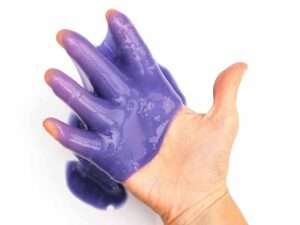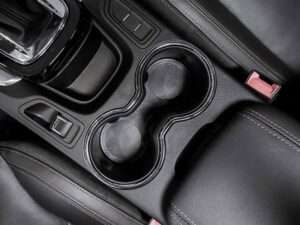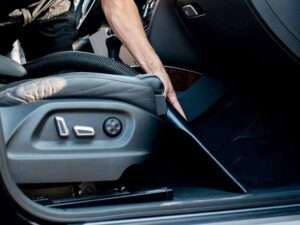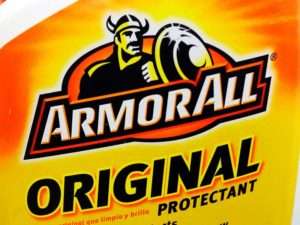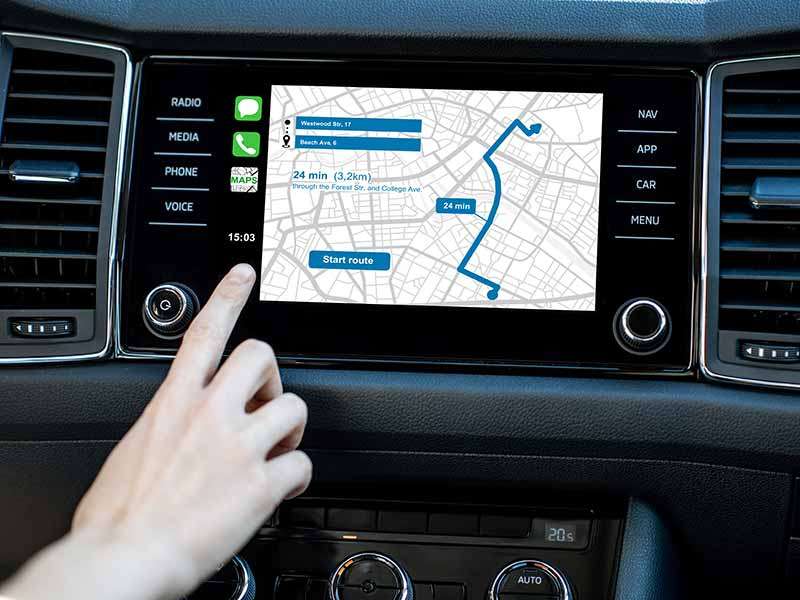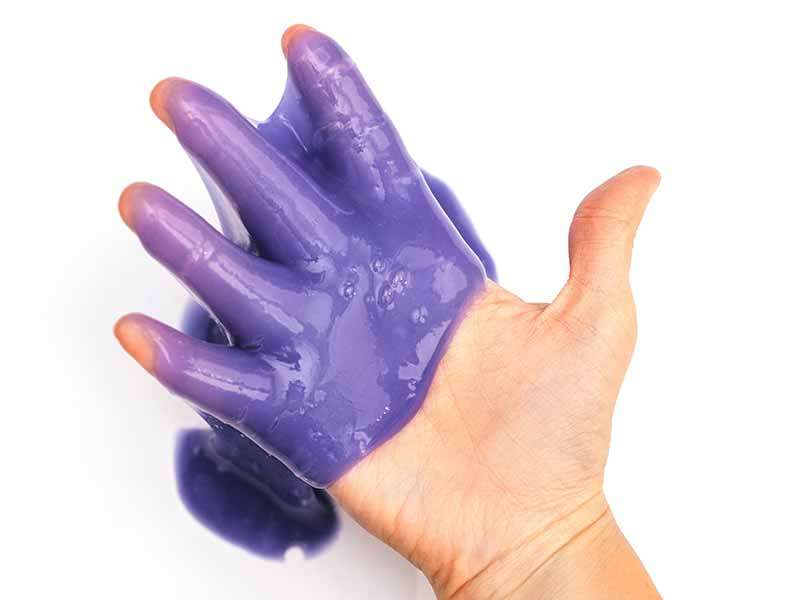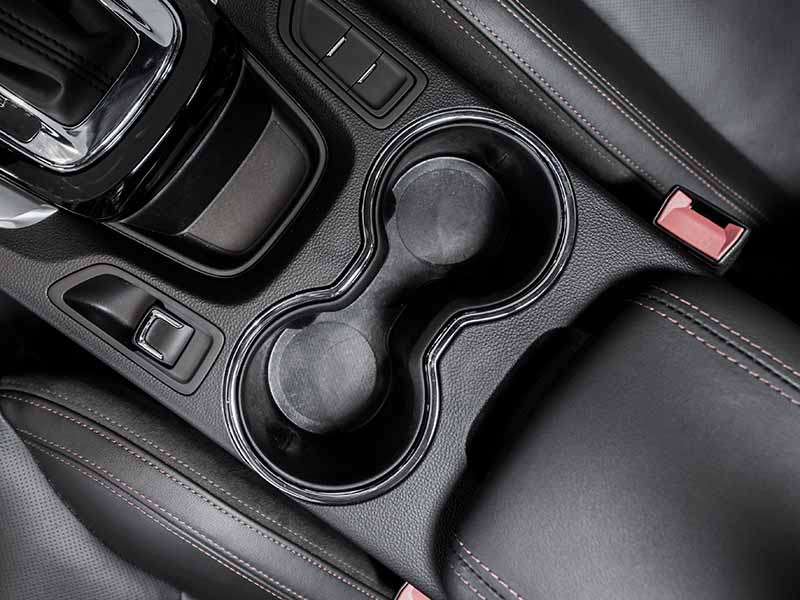Table of Contents
- Using Hydrogen Peroxide To Clean Car Seats
- What Kind Of Stains Does Hydrogen Peroxide Remove?
- What Percentage Strength Of Hydrogen Peroxide Removes Stains
- How Long Should You Let Hydrogen Peroxide Sit On A Stain?
- Is Hydrogen Peroxide Safe For Cars?
- Does hydrogen peroxide expire?
- What Is Hydrogen Peroxide
- How Does Hydrogen Peroxide Remove Stains?
- Helpful Links
- Conclusion
Hydrogen peroxide is an excellent stain remover for many types of stains, but mostly organic-based stains. It’s a popular stain remover for clothes and is sold in powered form under the brand name OxiClean as a safer alternative to chlorine bleach for whitening and brightening whites and colors.
It can do the same for your car upholstery as well. It must be diluted properly not to discolor the dyes in your car’s fabric though.
Let’s dive into the details of cleaning car seat stains with H2O2.
Using Hydrogen Peroxide To Clean Car Seats
Mix one part hydrogen peroxide to two parts water in a spray bottle. Spray any stained areas with the solution. Do not over-saturate the area. Simply spray enough to moisten the stain.
Use a drill brush or a handheld detailing brush on cloth car seats to thoroughly agitate the mixture and work it into the upholstery fabric. Let sit for ten to fifteen minutes and dab thoroughly with a microfiber cloth to absorb as much residual moisture as possible.
To clean car seats that are leather or vinyl, simply allow the mixture to sit for 10 minutes and wipe away with a microfiber towel. Do not spray on so much peroxide that the solution pools on the leather or vinyl. A light misting should be more than enough to get the job done.
What Kind Of Stains Does Hydrogen Peroxide Remove?
Hydrogen peroxide is great for removing a wide variety of stains. It works best on organic stains such as blood, body oils, grass, dyes, urine, and more. Essentially, it breaks down plant-based and or protein-based stains very well.
Many of the stains that accumulate over time on your car seats will usually be removable with a dilution of hydrogen peroxide.
Fabric car seats are notorious for collecting all sorts of stains and becoming dingy looking. Peroxide can transform car upholstery to a like-new look. It will brighten the lighter colors and breathe new life into your car seats.

What Percentage Strength Of Hydrogen Peroxide Removes Stains
Most over-the-counter hydrogen peroxide is sold as a stabilized 3% solution. When we say you should mix 1 part hydrogen peroxide to 2 parts water, this is referring to the 3% strength solution.
If you happen to have a different strength solution, adjust the suggested mixture ratio according to the increase or decrease in strength.
You should consider 3% hydrogen peroxide as full-strength for cleaning, disinfecting, and stain removal purposes. This strength can damage your car’s upholstery or carpet by bleaching the colors so please use caution.
Always test your mixture on an inconspicuous spot before you try to clean cloth car seats. A great location to test is somewhere underneath or under a trim panel if you can easily remove it.
How Long Should You Let Hydrogen Peroxide Sit On A Stain?
A 1/3 hydrogen peroxide to 2/3 water solution should be safe to be used anywhere in your car interior without worry that it will bleach or discolor upholstery, carpet, or leather.
For cleaning cloth seats, the mixture should sit for 10 minutes or so to penetrate into the fabric of the cloth car seats and attack the stains.
For cleaning leather seats, you don’t need to allow the cleaner to sit as long since it will not be soaking into the leather.
Allowing it to sit without being wiped away for an extended period of time should do no harm to the leather interior.
Car leather is coated with a protective urethane layer over top that will prevent the solution from damaging the leather underneath.

Is Hydrogen Peroxide Safe For Cars?
Undiluted hydrogen peroxide can bleach your vehicle’s interior upholstery and carpet when undiluted. Peroxide will not dissolve or otherwise damage fabrics though.
It makes stains and some dyes transparent which has the perceived effect of removing stains or bleaching. When diluted, it will not be strong enough to bleach your carpet or upholstery, but it will remove stubborn stains very effectively.
Can You Use Hydrogen Peroxide On Upholstery?
Diluted hydrogen peroxide is perfectly safe on car fabrics and is often sold in powdered form as a laundry detergent additive as a stain remover and safer method of brightening whites than a chlorine bleach.
It can definitely do damage if not diluted however. Never apply a dilution stronger than 1 part H2O2 to 2 parts water on anything you don’t mind discoloring.
Can You Use Hydrogen Peroxide On Leather?
Leather car seats and other leather wrapped bits like steering wheels, shift knobs, hand brakes, and the like, all use a leather that is coated with a thin urethane protective coating.
Even most high-end cars and trucks have coated leathers and this is a good thing. Coated leathers are extremely durable and resist drying out in the extreme conditions of your vehicle’s interior. They also making caring for your seats almost completely unnecessary.
To be completely fair, there are some Ferraris and other very extremely high-end cars that do have all-natural leather without any protective coating applied. Chances are you’ll know if you’re dealing with this type of leather, but if you’re uncertain, avoid using any dilution of hydrogen peroxide.
Coated leathers are essentially no different than cleaning plastic. You can hose them down and they’ll be just fine. I don’t recommend that of course, but I think you get my point.
Can You Use Hydrogen Peroxide On Plastic?
H2O2 is safe to use on plastic trim, dashboards, consoles, and door panels. It will also not damage plastics in, on, and around your car seats.
I would avoid spraying it too liberally on power seat controls or mechanism like those used to adjust your head rest just to be extra cautious, but I wouldn’t expect an real problems if you get a little heavy handed when spraying those areas during a thorough cleaning.
Will Peroxide Damage Car Paint?
Hydrogen peroxide is safe on automotive paints and will not damage clear coat. It will however likely remove waxes and paint sealants that have been applied as a protective UV coating and hydrophobic repellent.
If you do accidentally get a little peroxide on your car or truck’s finish, don’t worry, but you will want to make sure you reapply wax or sealant to the area that came into contact with the paintwork.

Does hydrogen peroxide expire?
Hydrogen peroxide typically has a 3 year shelf life. If you have an old bottle or aren’t sure if it is still effective, you can pour some into a glass. If there is fizzing or bubbling then it is still potent. If it acts like water, it has lost its potency and shouldn’t be used.
Hydrogen peroxide is usually sold in brown plastic bottles. The reason for this is to help preserve it since it breaks down due to exposure to light. If you make a mixture and put it in a clear spray bottle, don’t expect it to last long if it isn’t kept in complete darkness when you’re finished.
It’s best to try to only mix as much as you may need to get the job done that you’re working on since it doesn’t keep well in typical spray bottles. If you run out while working, you can always mix up a little bit more as you go.
What Is Hydrogen Peroxide
As the name implies, hydrogen peroxide is made up of 2 parts hydrogen and 2 parts oxygen. It reacts strongly with certain organics and is used as an antiseptic and bleaching agent. When it reacts, it rapidly releases oxygen and water.
It’s usually sold over the counter as a dilution of 3% in water. It breaks down when exposed to sunlight and should be stored in an opaque plastic container to maximize its shelf life.
High concentrations of H2O2 are actually used as a rocket propellent due to the violent reaction and release of hydrogen and oxygen when a reactant is added.
How Does Hydrogen Peroxide Remove Stains?
H2O2 is interesting in how it actually removes stains. It technically doesn’t actually remove the stain but it bleaches the stain away. The contaminant causing the stain is still there, but it has been bleached transparent so that it can no longer be seen.
The mixture reacts with organics and other certain reactants commonly found in common stains and dyes. It releases oxygen and water and in doing so creates the chemical reaction that bleaches the stain away.

Helpful Links
Conclusion
Deeper cleaning of your car’s interior means properly cleaning between the console and seats. Seat removal may seem like the most efficient way to clean between car seats and the console, but you can damage the car’s interior if you’re not careful and don’t have someone to help you.
A crevice tool and some detailing brushes can easily get the job done if you have a powerful vacuum and a little patience.
I actually find this much easier than pulling car seats out unless there is a nasty drink spill or something else significant that would make pulling the seats worthwhile.
Good luck and happy detailing.

